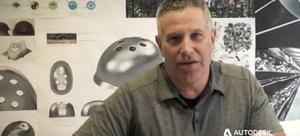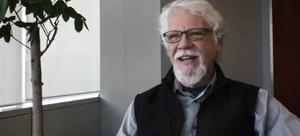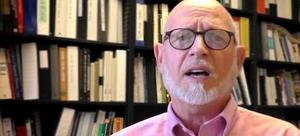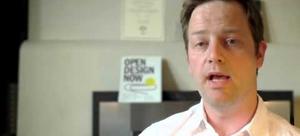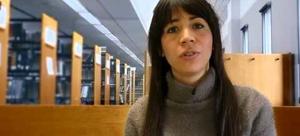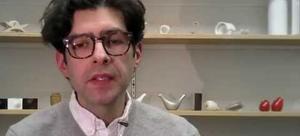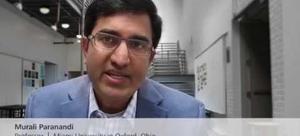These stories are from designers, sharing their experiences of using the sustainable design learning materials– including online courses - available on this website. They are meant to be educational and inspire others to use this content to help further their own knowledge and skills in sustainable design.
Design for Impact - Designers' stories of social and environmental change presented by Core77 and Autodesk
Future Makers - Designers’ stories solving global challenges, from climate change to energy access presented by Dezeen and Autodesk
BIM- integrated whole building energy and daylighting analysis allowed the team to understand potential performance.
Widely recognized for award-winning, innovative architecture and planning projects, New Orleans based EDR recently used Autodesk tools to achieve 100% daylighting while improving building energy performance on two projects.
Using Insight software, HOK can quickly and easily model the effect of design changes on lighting, cooling, and other sustainability measures, helping the firm move toward meeting the 2030 Challenge.
Sly Lee doesn't just want to save the oceans; through the technology non-profit The Hydrous, he is recruiting an army of citizen scientists from across the globe to join forces with him, collaborating on a mission to revitalize the coral reefs.
Entrepreneur Matanya Horowitz is on track to address those concerns with AMP Robotics. With precision, speed and accuracy, their robotics technology is designed to take over the most dangerous jobs that humans now do at recycling facilities, mitigating what Horowitz calls "dull, dirty and dangerous work."
Camilo Anabalon, the designer behind BabyBe, wants to ensure all infants have access to the benefits of immediate physical nourishment. His work aims to offer premature infants the same emotional care available to those delivered complications-free by facilitating the nurturing crucial for them to thrive.
Nate Storey, founder and CEO of Bright Agrotech, wants to use cutting-edge technology to re-establish this link by reinforcing the critical role small family farms play in bringing food to our supermarkets, restaurants, and homes.
Aaron Latzke and David Delcourt of SIVA would like to empower consumers to harness the most accessible energy source we have available to us: our own bodies. We may be energy consumers, but we are also energy generators.
Suz Somersall is using her platform as a change agent to empower new generations of women in engineering. Through her national education initiative, KiraKira, Suz leverages the educational pedagogy of Science, Tech, Engineering, Arts and Math (STEAM) to chart a path toward greater gender inclusivity in the field, using 3D modeling to leverage girls' creative curiosity.
Barent used Autodesk Fusion 360 to design BikeShare Helmet, Best Professional Project winner in the Cradle to Cradle Design Competition, which led to Barent introducing Fusion to his students. Since doing so, he has seen an increase in engagement, time, and effort spent on their projects, resulting in higher quality, more refined design outputs.
Danielle aims to encourage a departure from conventional materials and production techniques in search of long-term, sustainable solutions. Danielle Trofe is part of the Autodesk Entrepreneur Impact Program, which helps entrepreneurs and startups making a positive impact in the world get to market faster through access to free software, training, events, and co-marketing opportunities.
In 2012 Yana DeMyer started Roving Blue, making advanced, lightweight, portable water purification systems. Roving Blue is part of the Autodesk Entrepreneur Impact Program, which helps entrepreneurs and startups making a positive impact in the world get to market faster through access to free software, training, events, and co-marketing opportunities,
Justin is a PhD Candidate in Mechanical Engineering with a Bachelor’s of Science degree in Mechanical Engineering from West Virginia University.
After graduating Magna Cum Laude in 2012, Mr. Chambers continued his work as a NanoSAFE Graduate Fellow and is currently conducting research and working on new ventures. Mr. Chambers has founded two companies, plays a role in other partnerships, and supports innovative efforts at West Virginia University.
Matthew and his co-founder, Hahna Alexander, formed SolePower to design wearable energy harvesting devices for powering portable electronics.
An avid hiker, Matt Stanton is no stranger to the need for power while off the grid. His personal experience was on his mind while developing an energy harvesting shoe insert at Carnegie Mellon University. After graduating, Matt and his co-founder, Hahna Alexander, formed SolePower to design wearable energy harvesting devices for powering portable electronics, thus bringing forth a new and more reliable off-grid personal energy solution.
Dennon is co-founder of ReDeTec (Renewable Design Technology), a company committed to making Making sustainable and affordable.
Oosterman took Engineering Physics at University of British Columbia, and increasingly found himself spending more time in the lab working on projects such as a wall climbing robot, long range UAV, and high gain guitar amplifier.
Bill, a Professor of Design, Hongik University, uses Autodesk Fusion 360 and Sustainability Workshop content to support his philosophy of teaching his students sustainable product design, good design process, and value of design thinking. By learning sustainable design, students are equipping themselves to do great work in whatever industry they choose as they enter the workforce. Bill teaches his students the importance of designing products that are useful and valuable to humans.
Glenn, Associate Professor, Texas Tech University, believes there is no better educational tool, than the BPA Certificate Program, for teaching his students about things like heating, cooling, and lighting of buildings so that they can incorporate those at the initiation of a building design, and that BPAC will be the differentiator for students, when they are ready to pursue jobs.
Jamie Billing, Programme Leader in Design Futures at Plymouth College of Art, Technical Director, Co-oproduct CIC, uses many of the product design tools on the Autodesk Sustainability Workshop, including content around design for disassembly, design for repair, and design for recycling, amongst others. Students very quickly learn that designing products sustainably and ethically, considering the environment, is not at all impossible, but is, in fact, very easy.
Yolegmma, a Student at Rochester Institute of Technology in New York, uses Sustainability Workshop product design content and Fusion 360 and applies to her student project of an eco-refrigerator. Using product lifecycle, disassembly and recycling helps to influence user behaviour and reduce energy consumption. Yolegmma is proud to use her sustainable design knowledge to help her local community as well as the environment.
Alex, a Professor at Rochester Institute of Technology in New York, uses Sustainability Workshop product design content and Fusion 360 to teach his students how to design products which have not only less environmental impact, but a positive impact on the planet and the lives of the products’ users. His students also use the students’ projects on the Sustainability Workshop to inspire future designs.
Murali, a Professor at Miami University in Oxford, Ohio, uses the BPA Certificate Program and other sustainable design materials in the classroom, and his students then apply the knowledge gained to their studio project. Learn how it empowers and excites his students, as well as helps them understand the impact of their design decision making on the environment.

